February 19, 2014 Auroras
Grand Rapids, MN
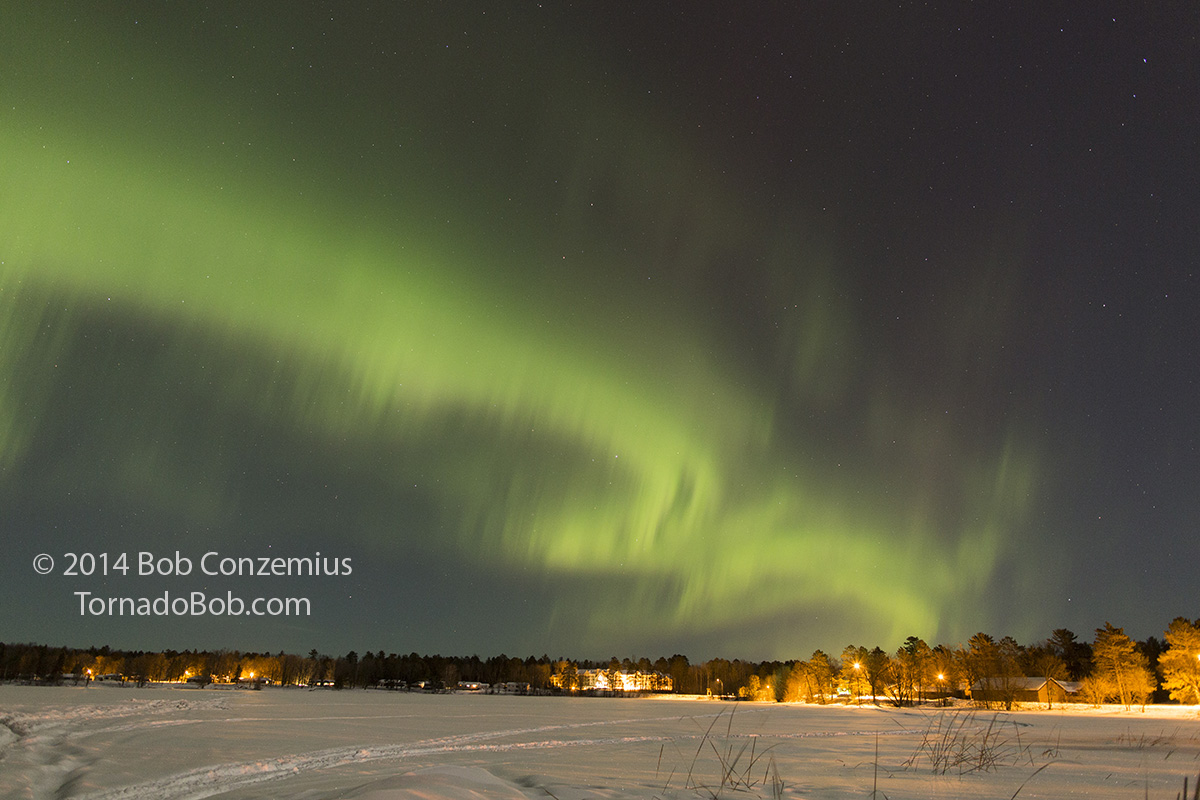 |
| Auroras over McKinney Lake in Grand Rapids, MN at 1:32 AM. |
This event, for some reason, is among the top give aurora events I've ever shot. The moon was nearly full, which usually washes out the contrast and makes for some relatively dull images, but the auroras really brightened up during the night, and they competed very well with the moon. When the moon is bright, I sometimes like to choose scenes where city lights would normally interfere with shooting because the moon also washes out the city lights, and that can make scenes in town much easier to shoot.
I had been keeping track of the ACE spacecraft data (see below) during the work day as the north-south component of the interplanetary magnetic field (Bz) had been slowly dropping south all day. By the end of the day, Bz was around -8 nT, and the GOES magnetometer readings were indicative of visible auroras. I was planning on doing some cross-country skiing early in the evening as darkness fell, then would go out and shoot auroras if the conditions continued to look good.
I set out to Mount Itasca to do a few hill climbs to get myself ready for the American Birkebeiner in Hayward, Wisconsin on February 22 (as it turns out, I had a cold, which prevented me from going to that race-- maybe things would have been different had I not been shooting auroras most of the night). I skied the Grand-in-Aid trails around the back side of the downhill ski area, and when I reached the top, pretty much the moment it was dark enough to see stars, I could already see a double auroral oval with one oval about 15 degrees above the horizon and another, brighter oval right at the horizon. Each time I got to the top of the hill, I checked again. The second time, there was some structure visible in the horizon oval, and the third time, there was just a single, diffuse oval 15 degrees above the horizon. I was in no hurry until I got back down to the bottom again, and tall columns had developed to my northwest, stretching really high in the sky. It was time to stop skiing and start shooting!
I had to run home to change into warmer gear, wolf down some dinner, and grab my cameras. As soon as I got home, there was a nice little substorm taking place, so I took a shot from my driveway. Things were looking great!
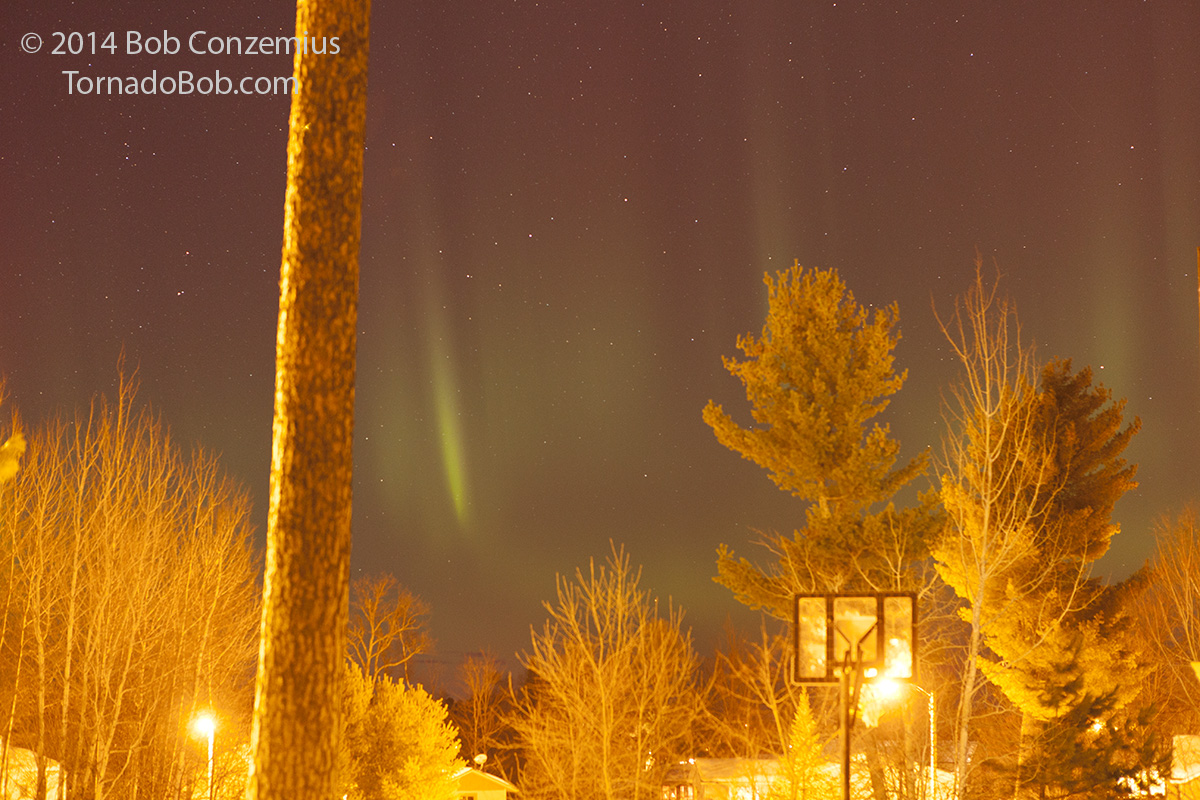 |
| 7:46 PM. Front yard shot. 70mm, ISO 1600, f2.8, 8 seconds. |
The moon had not risen yet, so I decided to head north of town and take a few shots until the moon came up, at which point the contrast would be not worthwhile, for this type of event, to make shooting worthwhile. A Bz of -8 nT doesn't typically provide auroras bright enough to compete with the moon, especially when they stay low to the horizon. I was not sure where to shoot, but I decided to take a couple shots on Peterson Road and then head toward Johnson Lake, take a few shots there until the moon came up, then head back home to get some sleep. I was fighting a cold and needed to rest up before my race on Saturday.
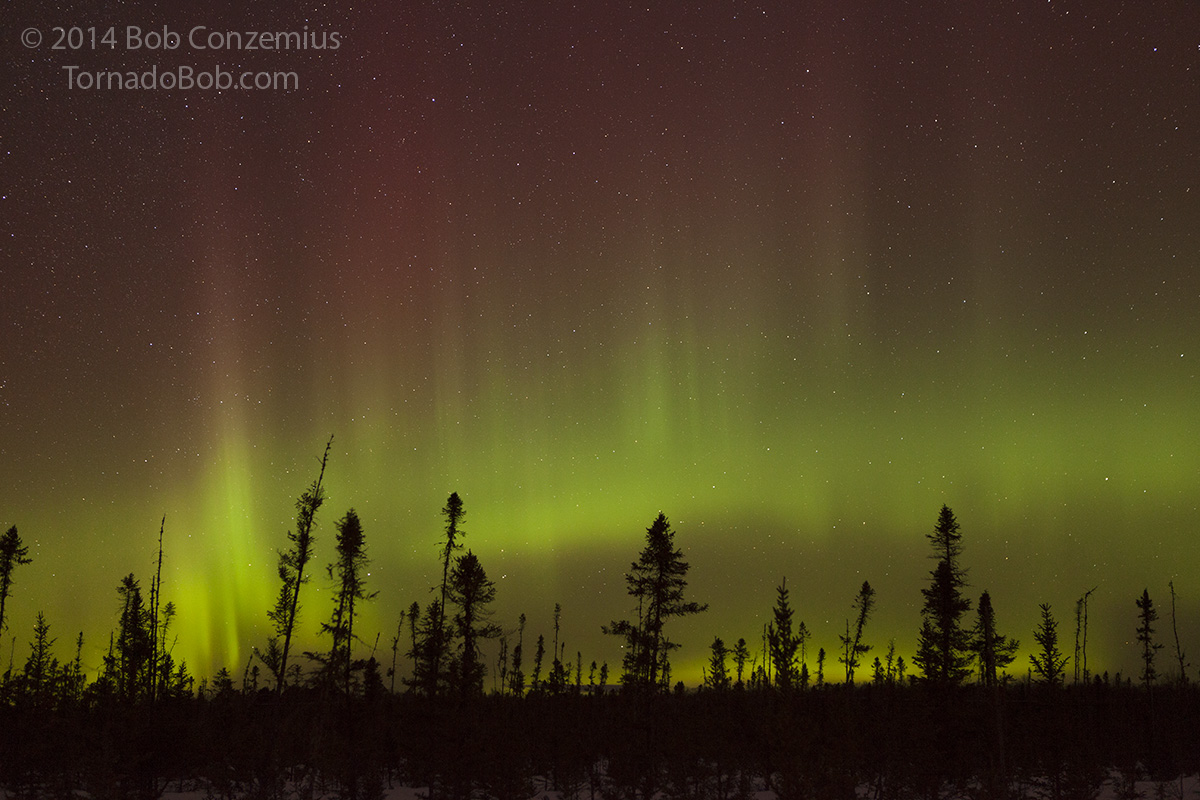 |
| Peterson Road. 9:05 PM, 45mm, ISO 1600, f2.8, 13 seconds. |
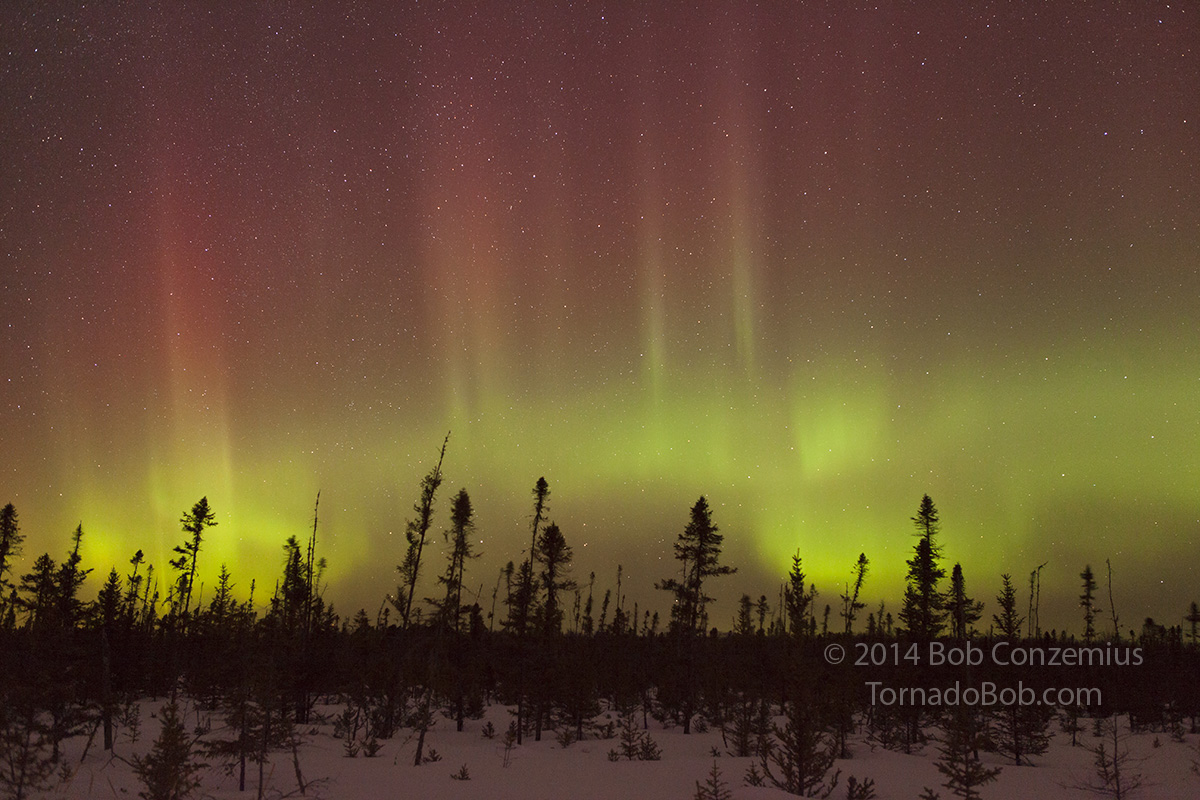 |
| Peterson Road. 35mm, ISO 3200, f2.8, 10 seconds. |
When I got back in the car, I checked Bz again before starting the drive up to Johnson Lake. To my amazement, ACE revealed that we had just had a CME impact, and Bz was now near -15 nT (scroll down to the bottom to see a graph of the data). Crap! My chances for getting a good night's sleep suddenly were a bit lower, but the moon was still going to rise, and contrast would still not be very good. I called my friends at Johnson Lake to tell them I was going to be in the area, shooting until moonrise, and they invited me over to shoot from their shoreline. I set up the camera and shot there for a little over an hour. Sure enough, the moon came up and brightened the sky, and some thin, mid-level clouds also moved in and made the shooting a lot less rewarding. At 11:00 PM, I decided to pack it up and call it a night. Note: these images were taken with the Samyang f1.4 24mm lens, which does not have the chip in it to tell the camera what the f-stop setting is. I think I had it at f1.4, but I sometimes change it to f2.8.
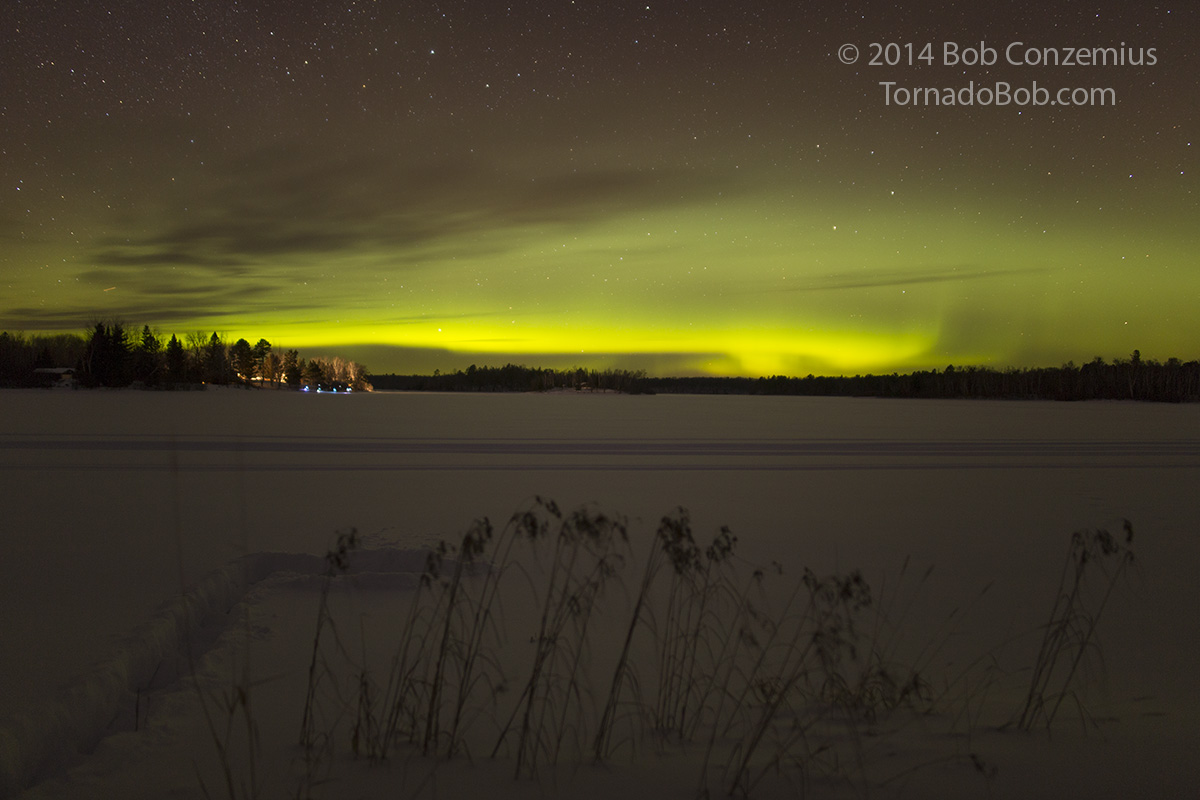 |
| Johnson Lake auroras at 9:52 PM. A "ground-hugging wall cloud" develops to the north-northeast. Looks like we are about to witness and "auroranado". 24 mm, ISO 800, f1.4 (I think), 15 seconds. |
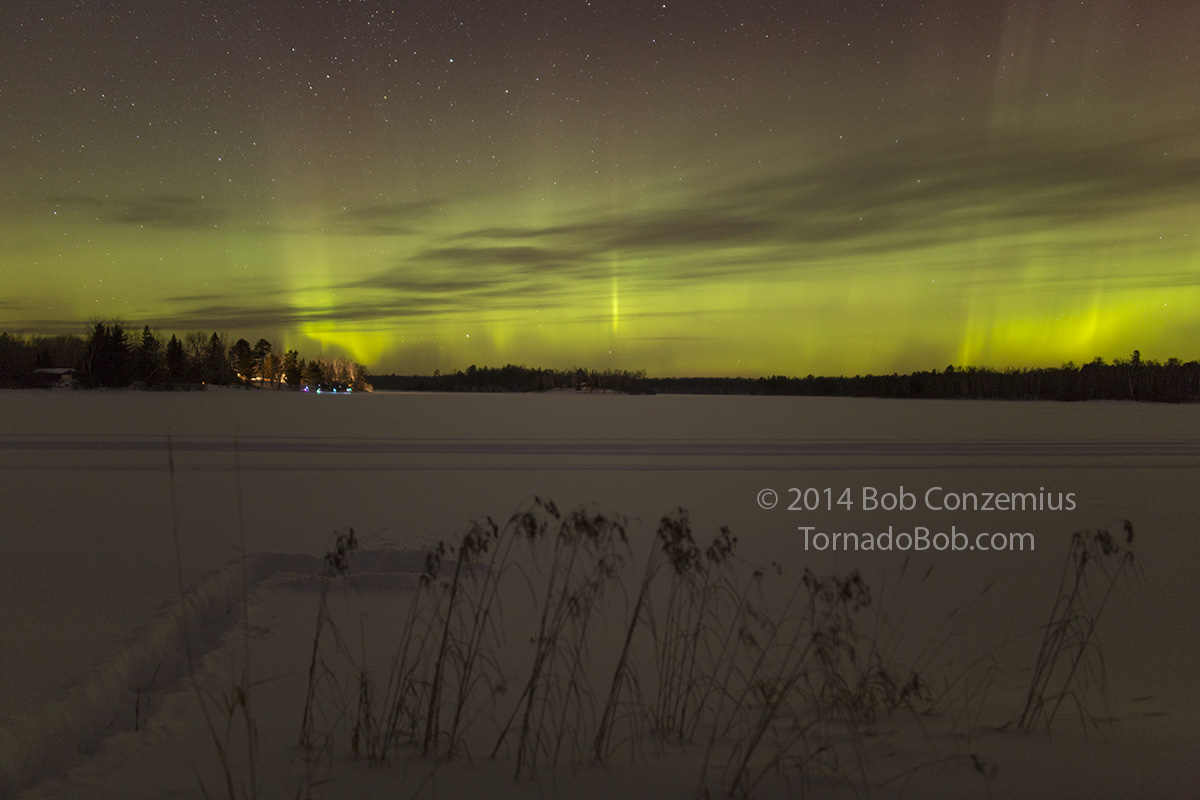 |
| A break-up into a lot of auroral columns. 24mm, ISO 1600, f1.4(?), 6 seconds. |
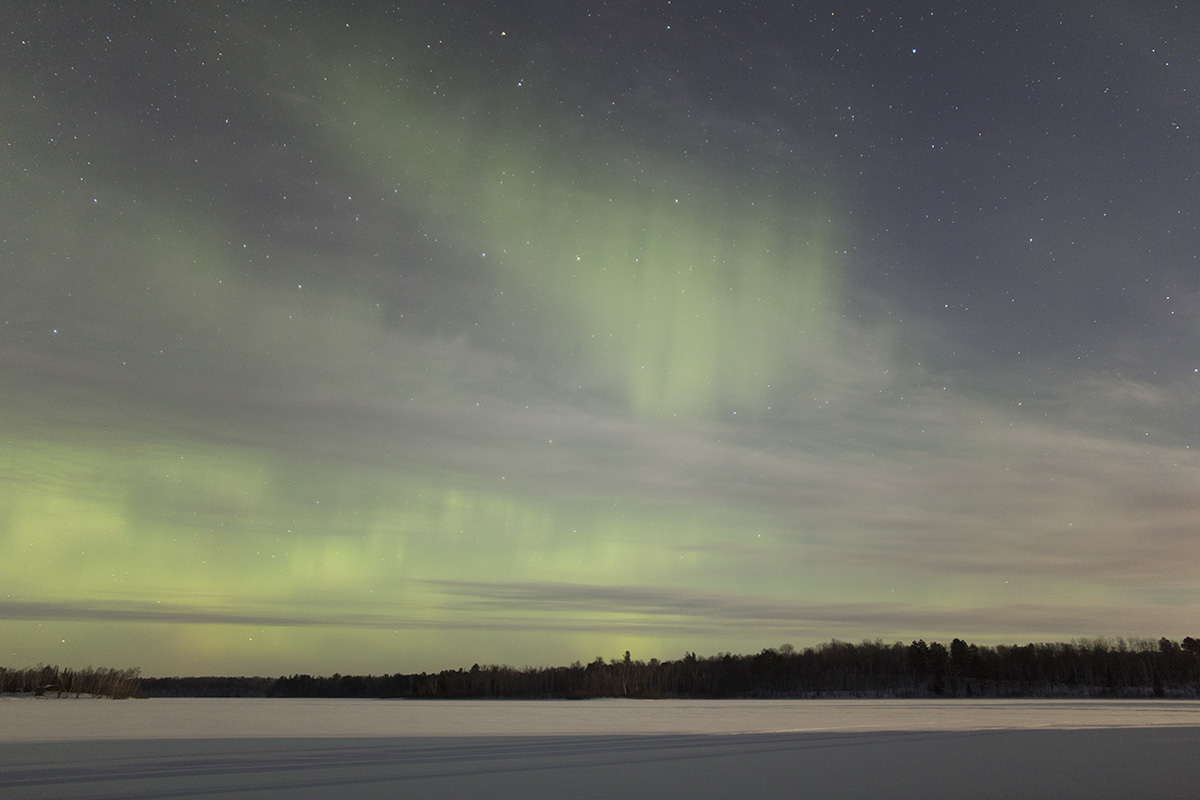 |
| After moonrise, a brighter sky and clouds wash out the contrast. ISO 1600, f1.4, 6 seconds. |
I drove south, back into town. This took me out from underneath most of the clouds. I decided to stop at McKinney Lake to shoot a few stills on my way home. Just one camera out of the car-- only a few shots-- still time to get a good night's sleep as it was still before midnight. I took my first shot at 11:29 PM. Oh, what the heck. I'll do a time lapse for a little bit. Can't hurt. Oh, hmmm. The clouds are clearing! That oval looks like it's getting brighter, it's coming south at me, and it has some structure, too!
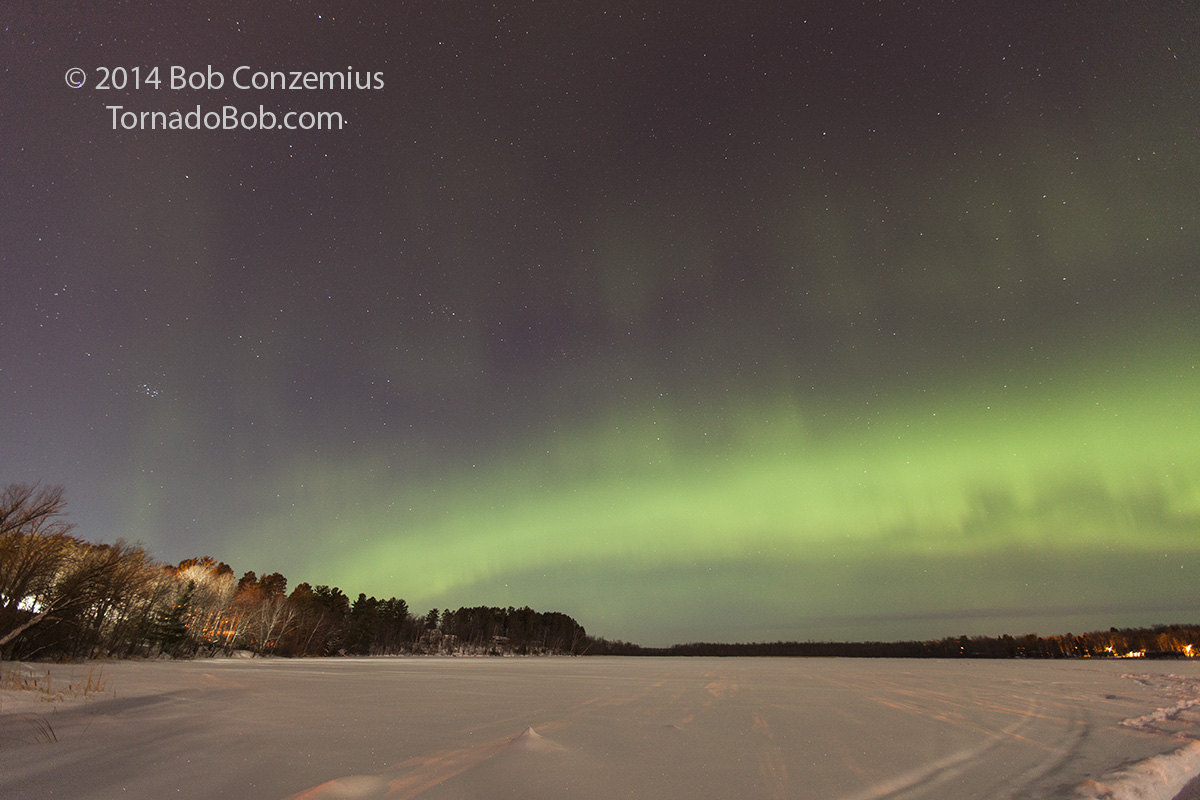 |
| On McKinney Lake. Time is 11:51 AM. The oval is getting brighter again. 16mm, ISO 1600, f2.8, 10 seconds. I had to drop the exposure about a quarter stop in Camera Raw. |
This turned out to be a much, much longer shoot than I thought it would. As the moon got higher in the sky and brighter, the auroras more than compensated for this as they brightened up and kept a reasonable contrast. The moon was also providing some nice lighting of foreground subjects. I succumbed to temptation and went back to the car to get the second camera. I already had a time lapse running to the northwest. I started a second one to the northeast.
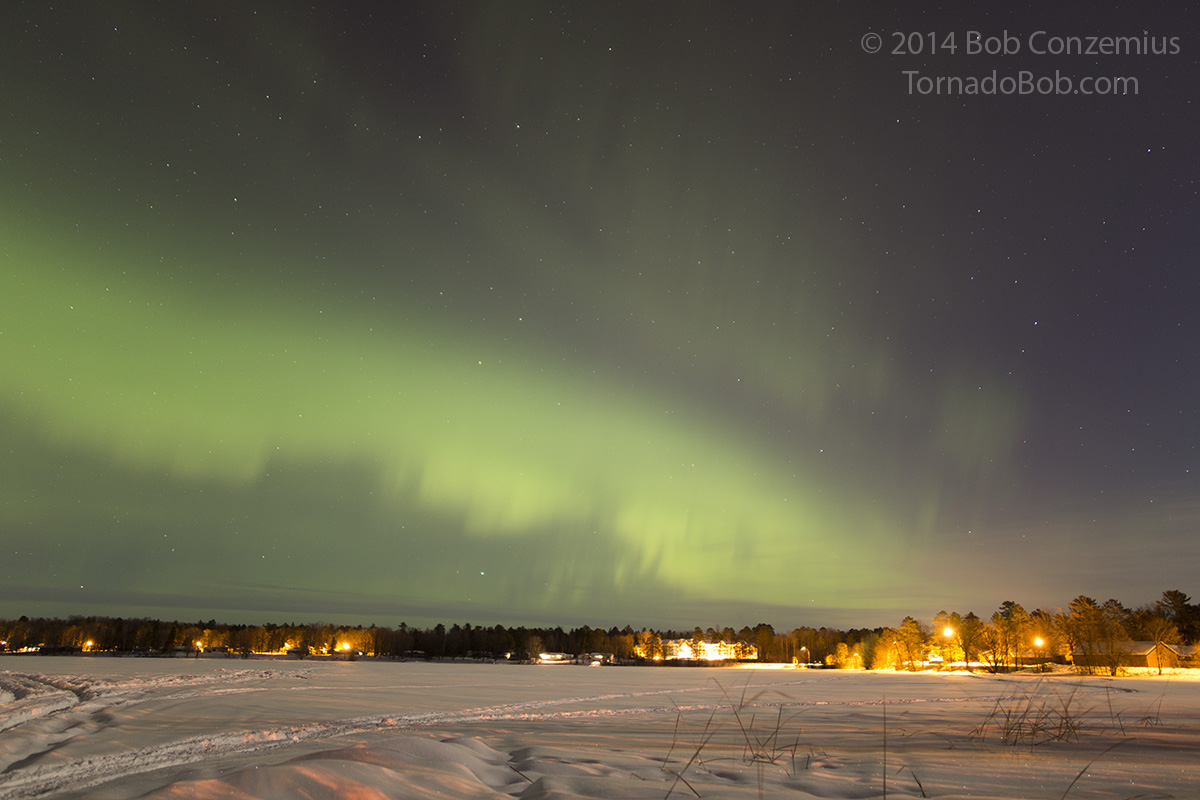 |
| The moon is high in the sky now, but the auroras are getting brighter. Time is now 12:01 AM. 24mm, ISO 800, f1.4, 6 seconds. I had to drop exposure in Camera Raw by almost a full stop, so I should have shot at 3 seconds. |
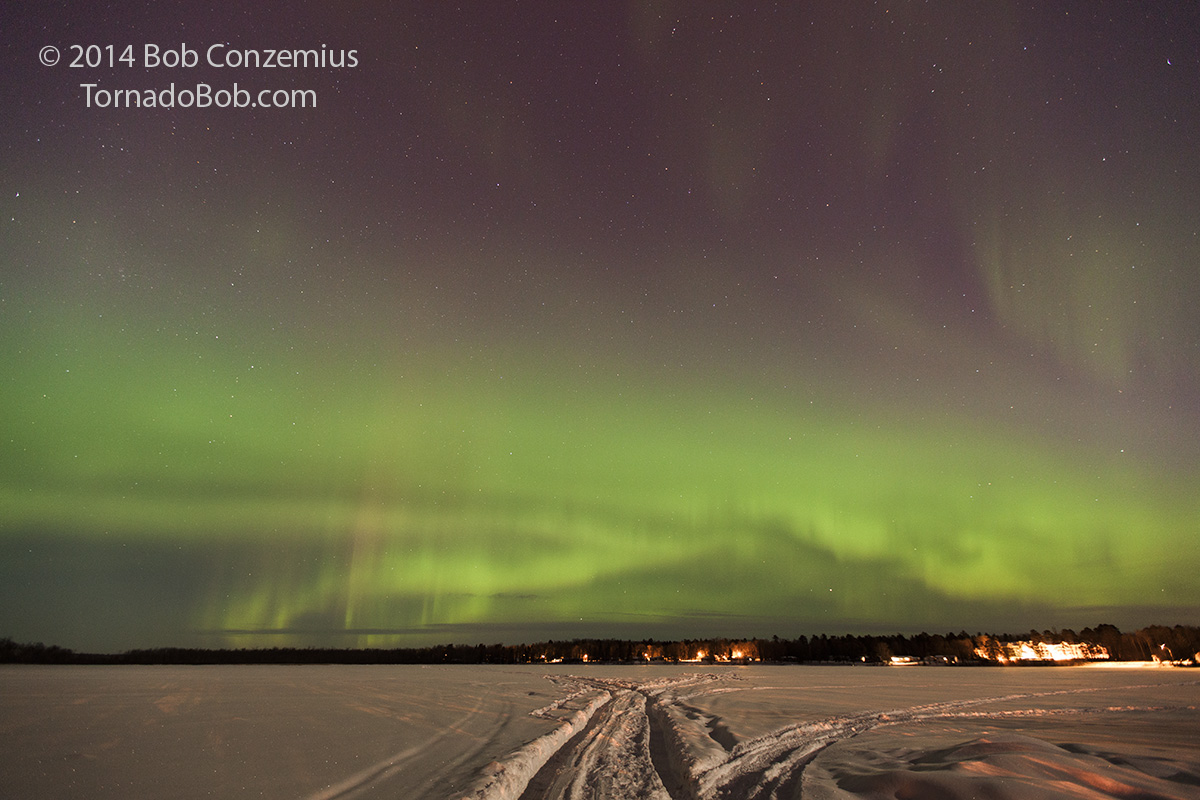 |
| 12:06 AM. I decided to reposition my first camera so that it pointed more directly north I tried a neutral density filter in Adobe Camera Raw to bring out the dimmer auroras up above. 16mm, ISO 1600, f2.8, 8 seconds. |
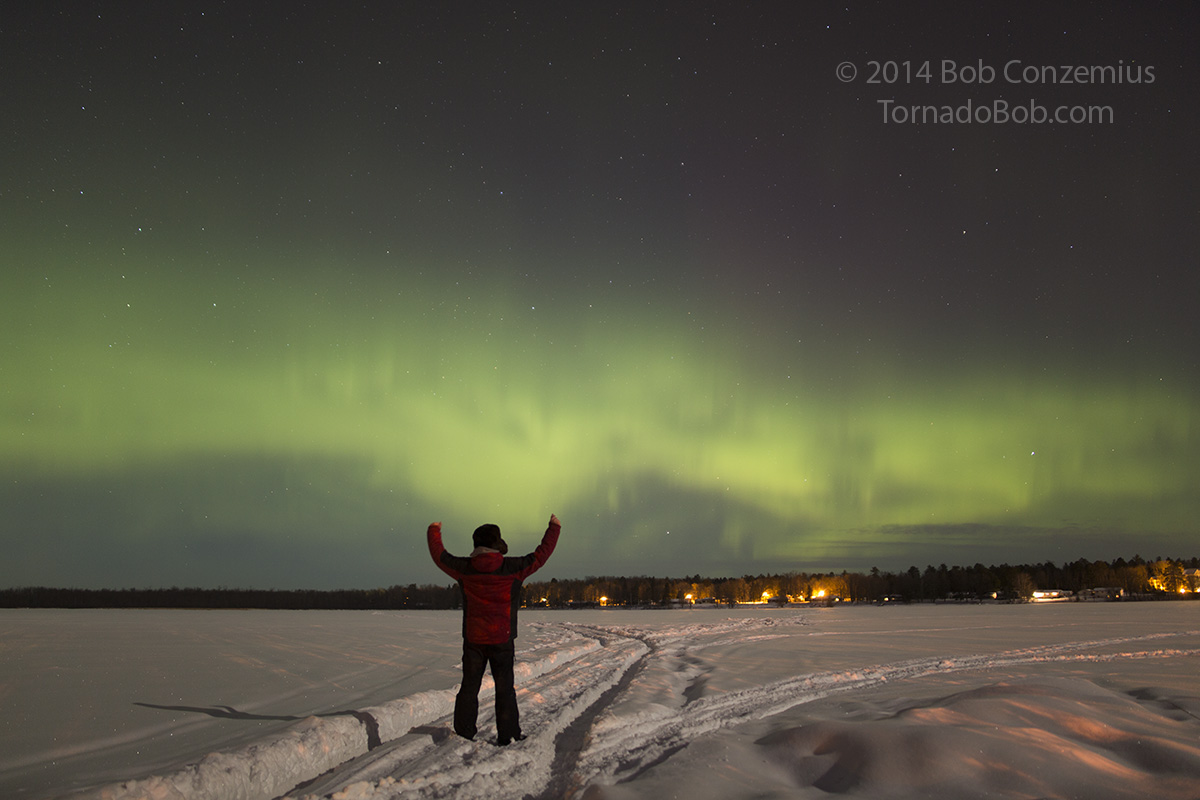 |
| 12:33 AM. Time for one of those corny aurora selfies.24mm, ISO 400, f1.4, 5 seconds. |
 |
| 1:32 AM. To the demise of a good night's sleep, the auroras brighten faster than the moon. 24mm, ISO 1600, f2.8, 2 seconds. |
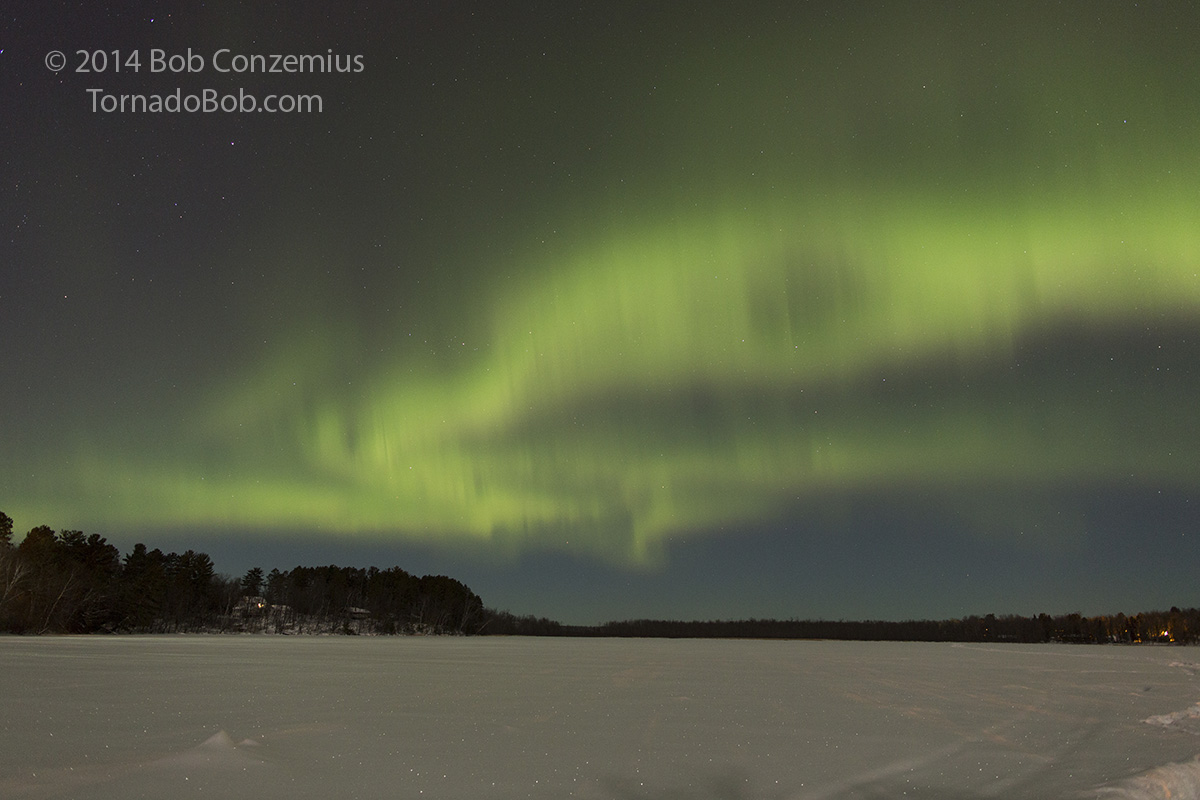 |
| 1:44 AM. This is the last shot I took with Camera 1 on McKinney Lake. f2.8, ISO 1600, 24mm, 2 second exposure time. |
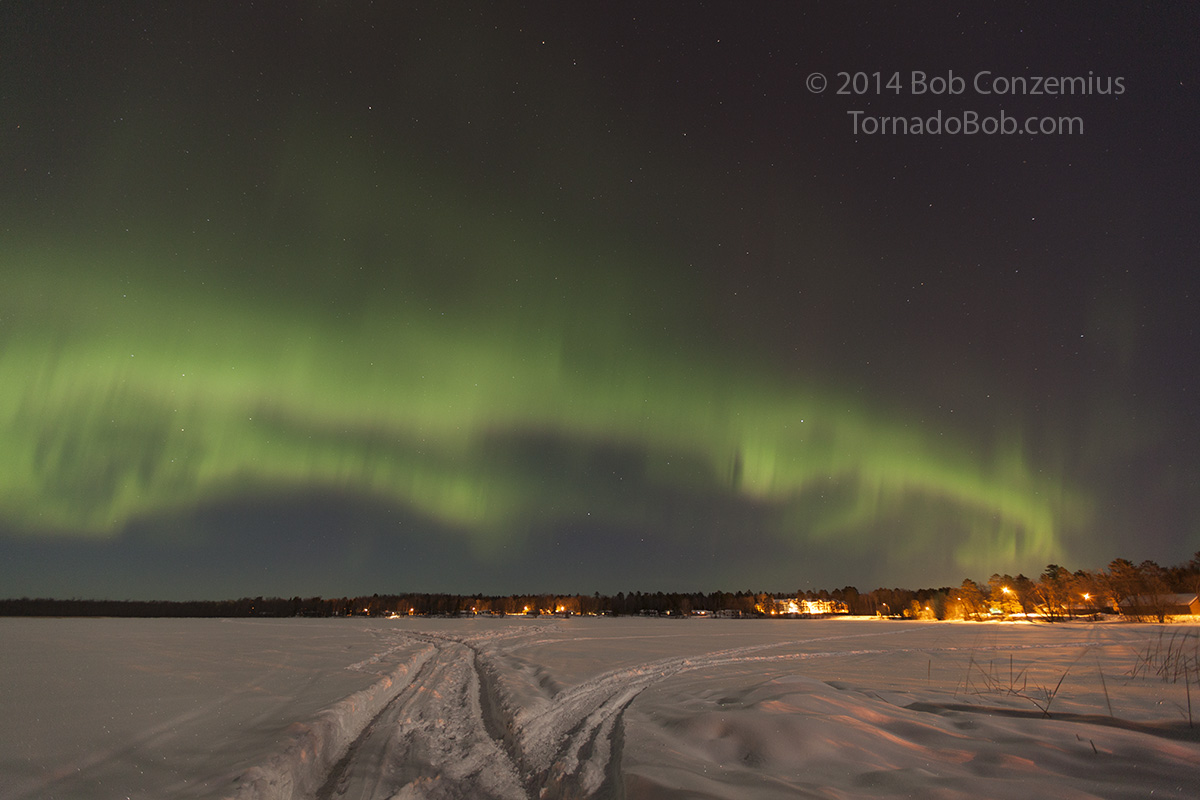 |
| 1:51 AM. The last shot on McKinney Lake. f2.8, ISO 800, 16mm, 6 second exposure time. This is straight out of the camera with no adjustments. |
I drove back through downtown to get home. I decided to do something silly and shoot the Central Square Mall with auroras in the background. It is one of the brightest spots in town with the street lights as well as the nearby M&H Station, which is really brightly lit. It took me two shots that I had to combine in Photoshop, but here is the result. It really is too bright there to shoot auroras. I had to block the street lights with my hand to see the auroras.
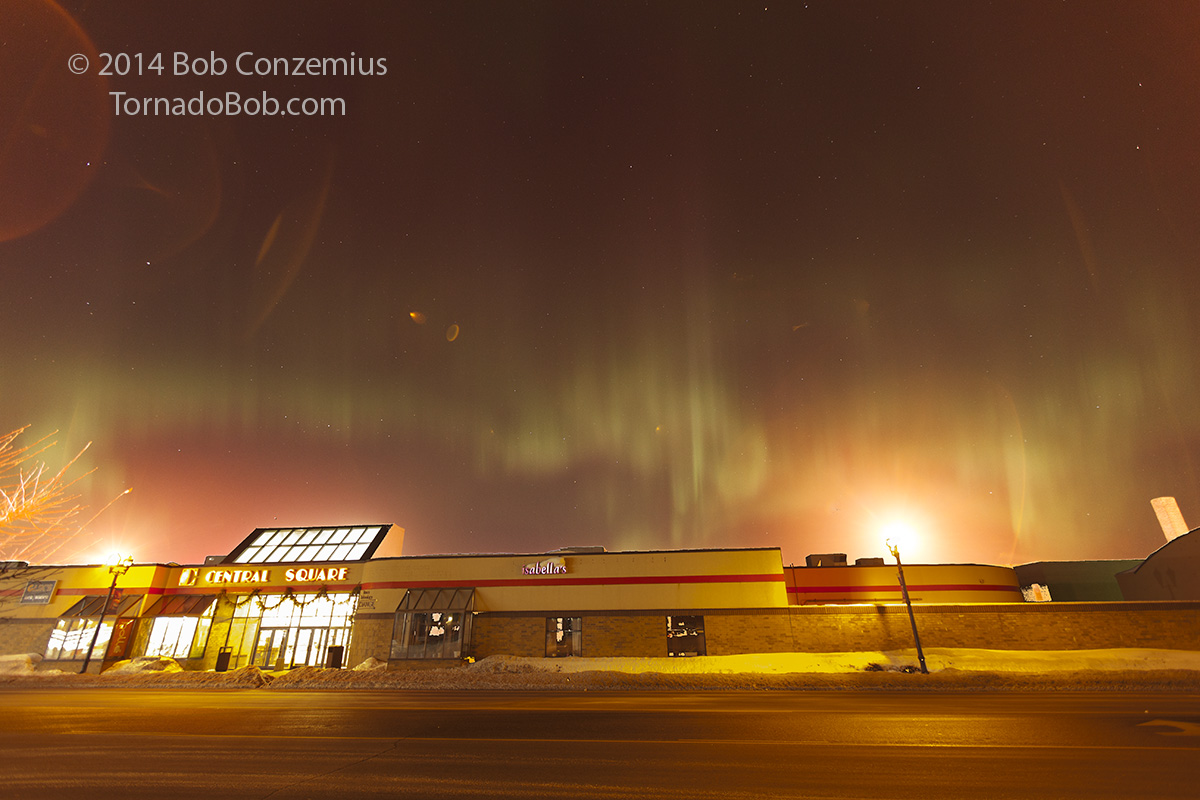 |
| 1:58 AM. Central Square Mall in downtown Grand Rapids, Minnesota. Auroras shot at 16mm, ISO 800, F2.8, 6 seconds. Mall shot at 1.3 seconds, which is about 2 stops down, and I had to lower the exposure further in Photoshop. |
Okay, so now it's 2:00 AM. Am I done yet? No. I decided to continue to be silly and attempted to shoot the Blandin paper mill with the auroras behind it. I could not find a suitable spot along the south side of the river without trees in the way, so I gave up on that idea. I forgot about the spot next to the Blandin House at the dam, which might have been fine. I might try that spot next time I shoot in town.
I drove over to the Sylvan Bay boat landing just a couple blocks from home and walked around out there. Some ice-fishing houses provided a nice foreground to do some more photography. Just to provide perspective here, a lot of these shots are looking northeast toward downtown with the lights from the Blandin mill usually making things too bright to shoot auroras in that direction.
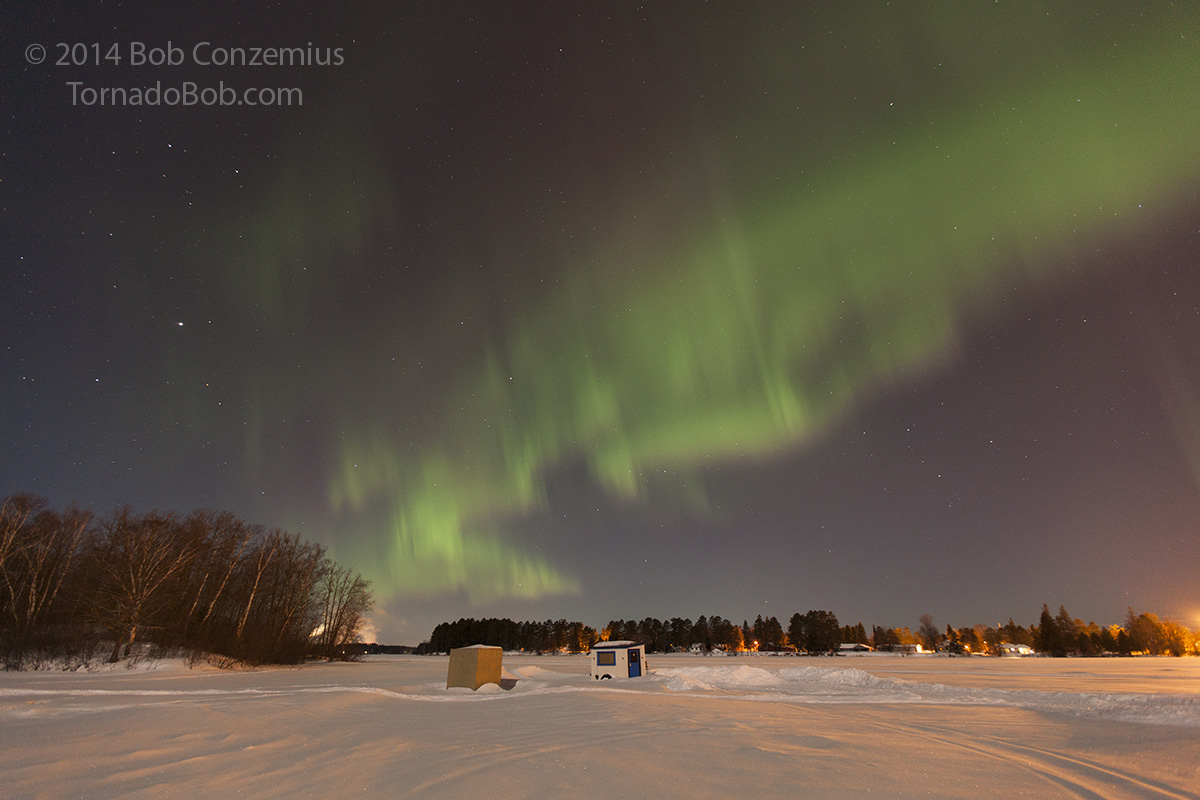 |
| 2:09 AM. Sylvan Bay looking northwest. 16mm, ISO 800, f2.8, 6 seconds. |
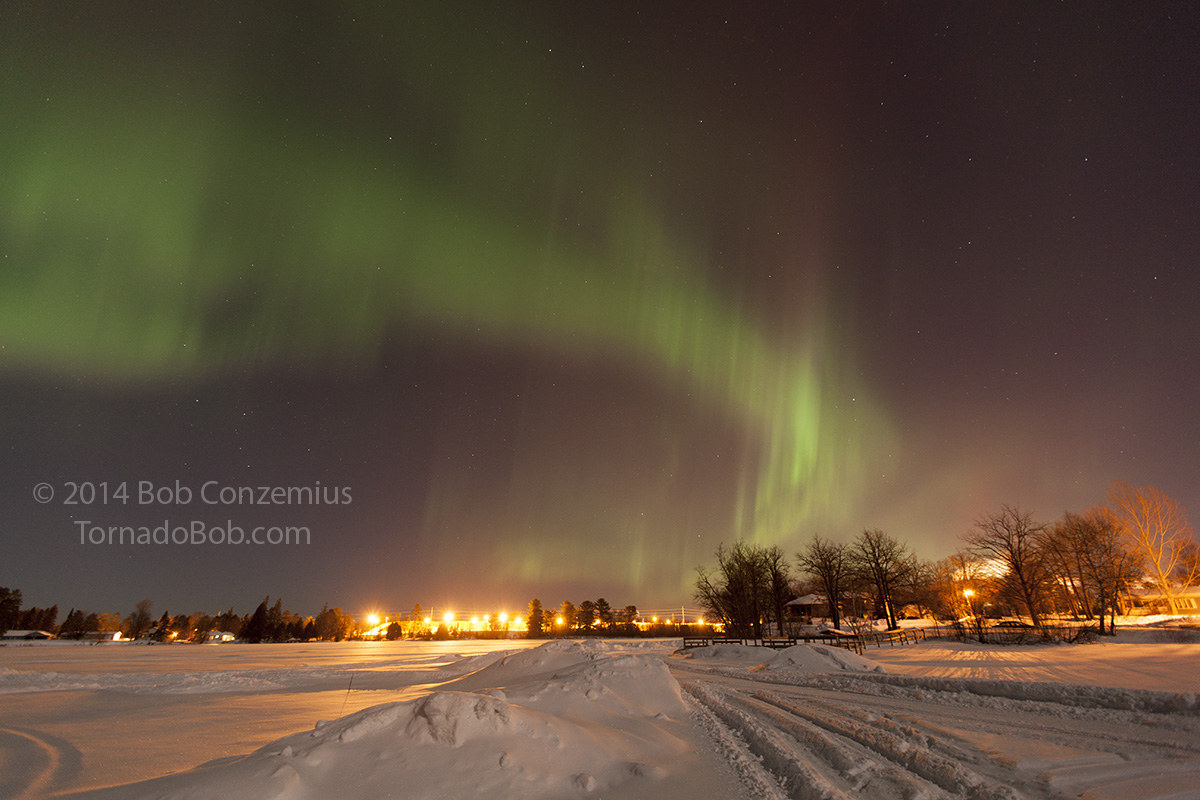 |
| Same spot looking northeast. The Blandin wood loot is the brightly lit area just to the left of center, and the Blandin paper mill is behind the trees on the right. |
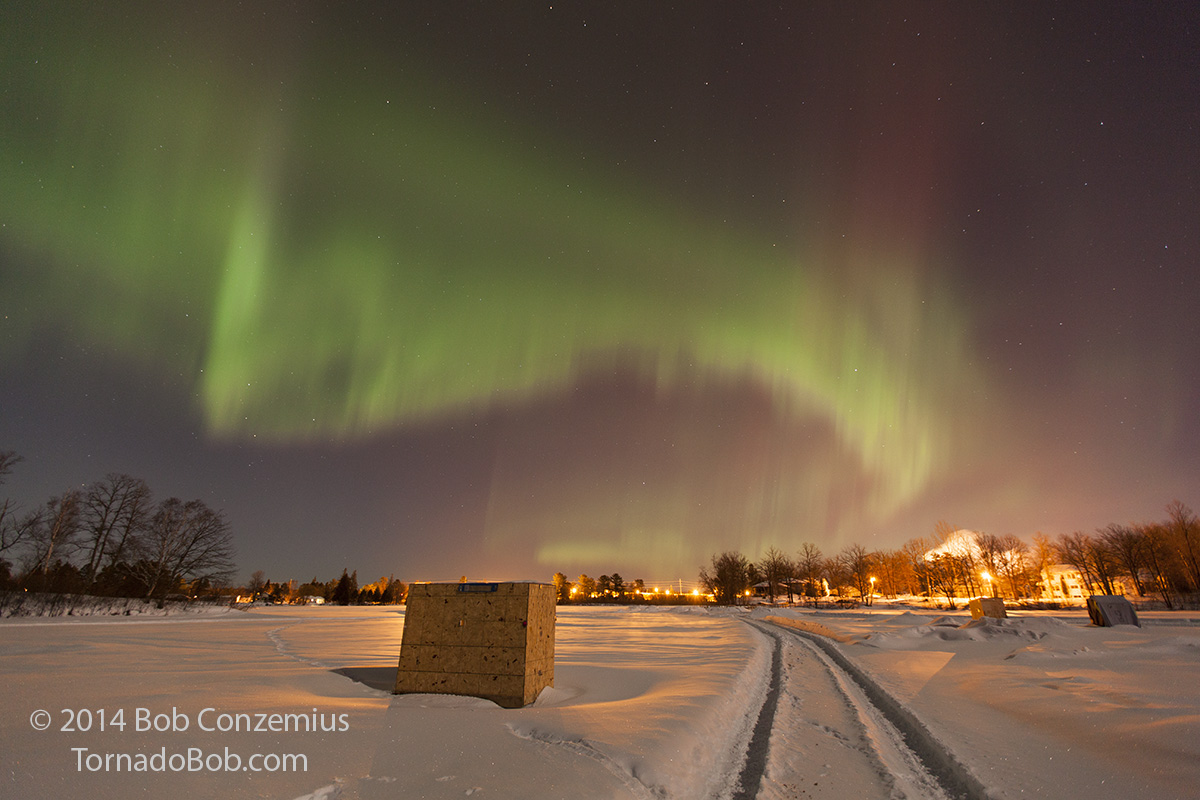 |
| Hunting around desparately for foreground shots now. Same camera settings as the shots above. |
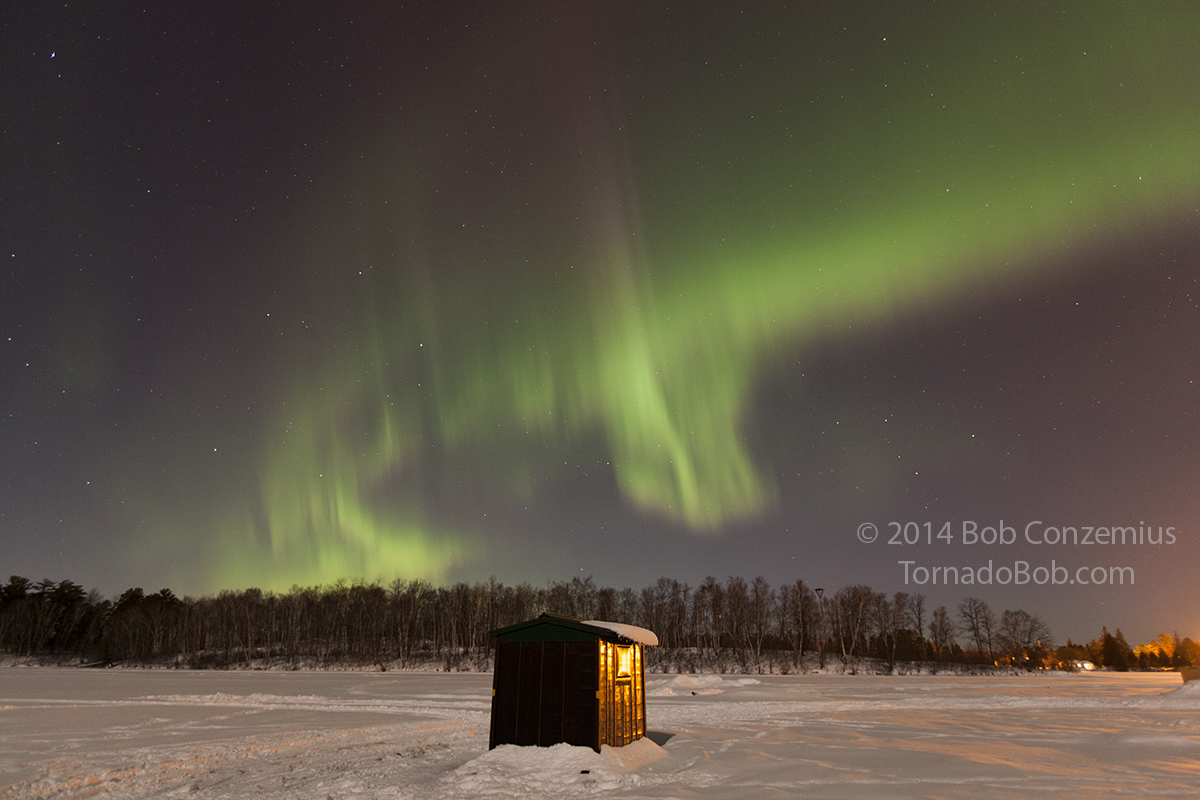 |
| Last ice house shot. Although it was warm (temperature around 20 deg. F.), I didn't bring my gloves with me when I impulsively ran onto the bay so my fingers were starting to go numb. Time to run back to the car! Same settings as above except 20mm focal length. |
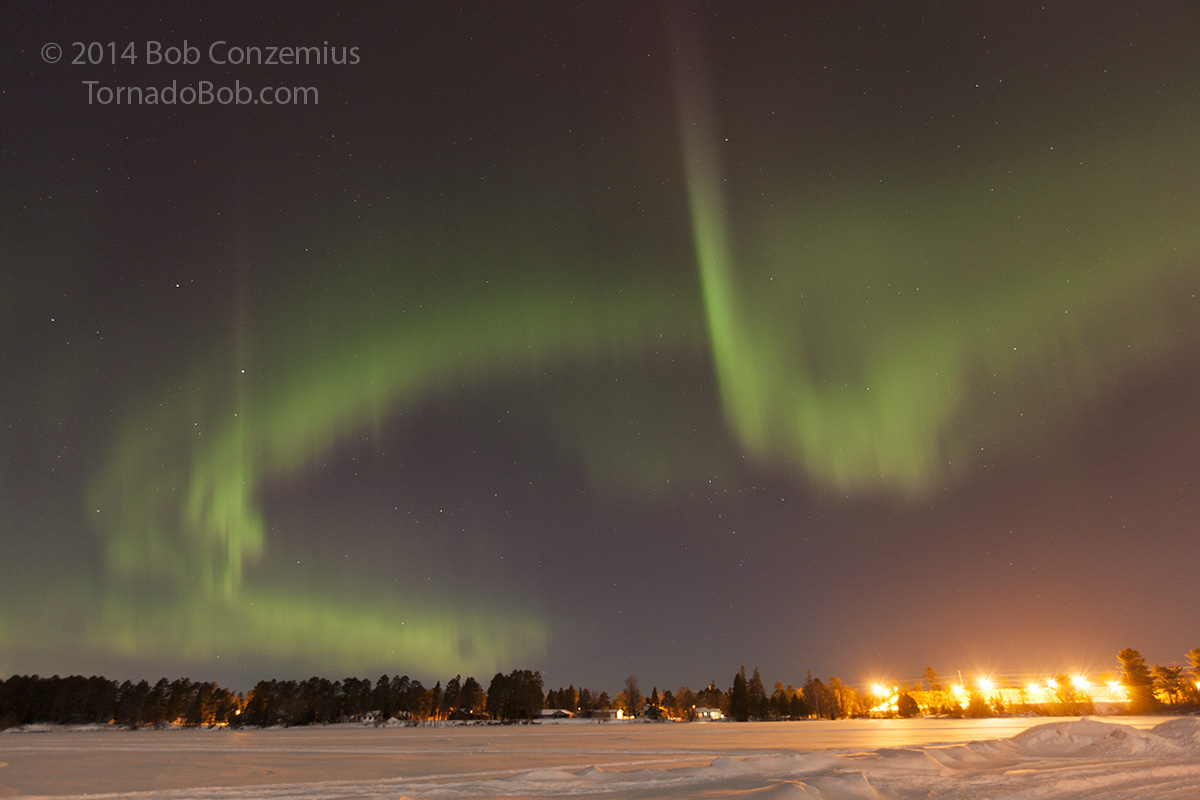 |
| Oh, I just have to take one more shot! Also 20 mm. |
Okay, so now I'm only a couple blocks from home. I briefly considered going to one or two spots in the Forest History Center, but the gates would be locked at this hour, and it would take a while to hike in there, so I just went home and took a few more aurora shots around the house. I ran downstairs and started uploading the images from one of the cameras and ran back outside to take more pictures with the other. After a few minutes of shooting, the auroras started to go into a brightly pulsating phase. I wanted to take video, but the better camera for that purpose was the one I had just hooked up to the computer to upload the shots, and that CF card was full. That was too bad because the video would have picked up these pulses. They were like intracloud lightning flashes. The only way to get them on camera was to do the old-fashioned time exposures. I set my camera down on the driveway, pointing straight up, pressed down the shutter release, and let it roll while I lied down on the driveway, staring up and enjoying the show. My last shot was at 3:29 AM.
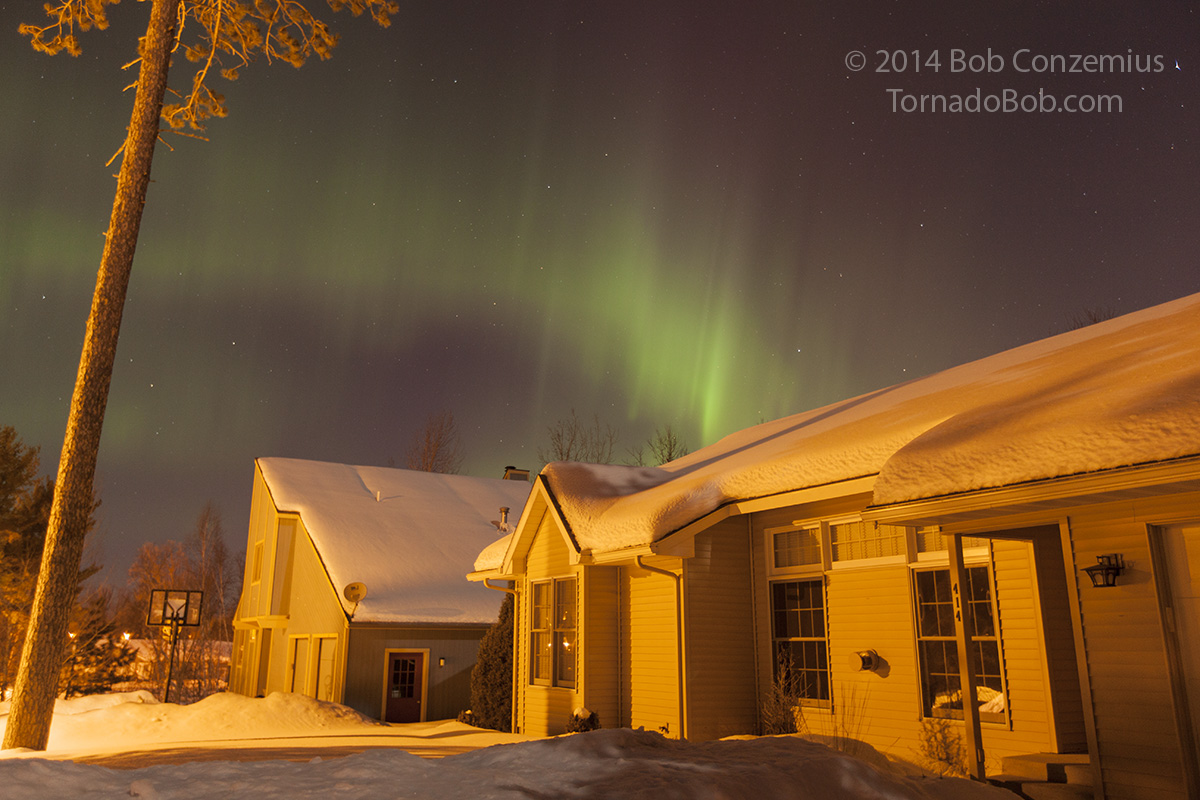 |
| House shot. 27mm, ISO 800, f2.8, 5 seconds. |
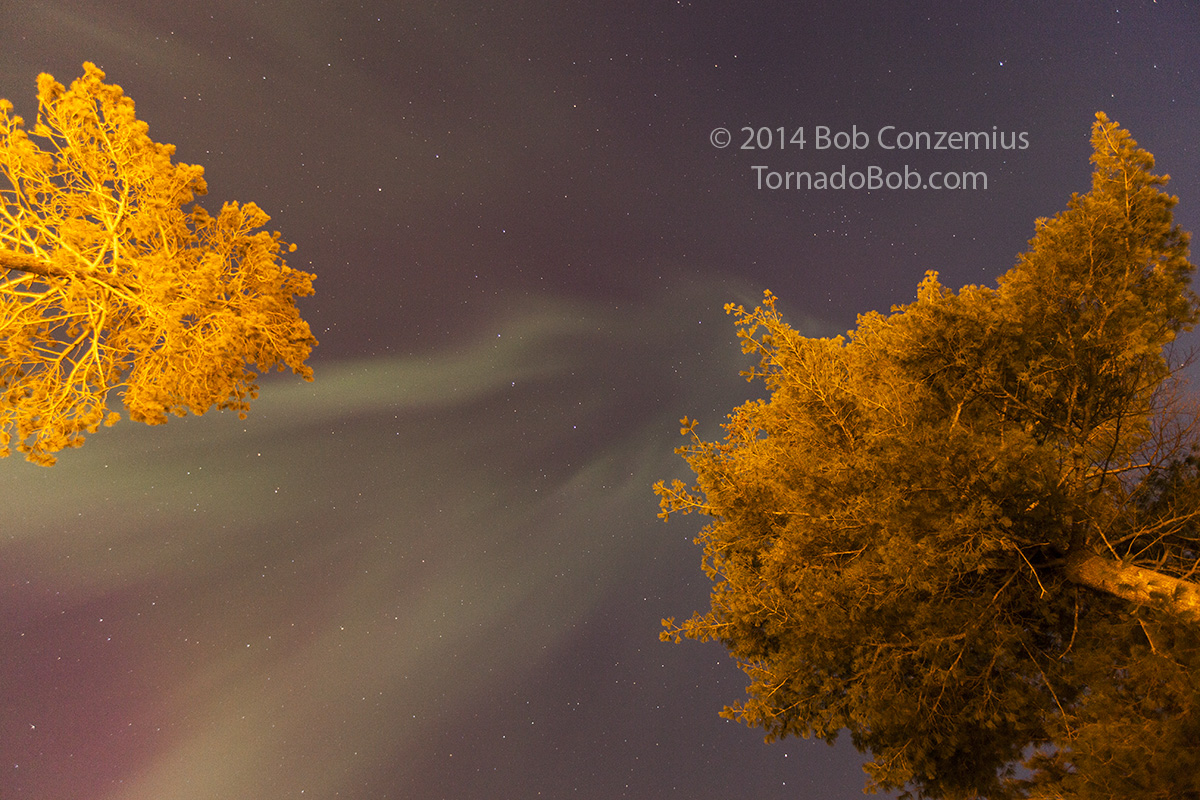 |
| Pulsating auroras, looking straight up, with the camera lying on its back on the driveway. 20mm, ISO 800, f2.8, 6 seconds. |
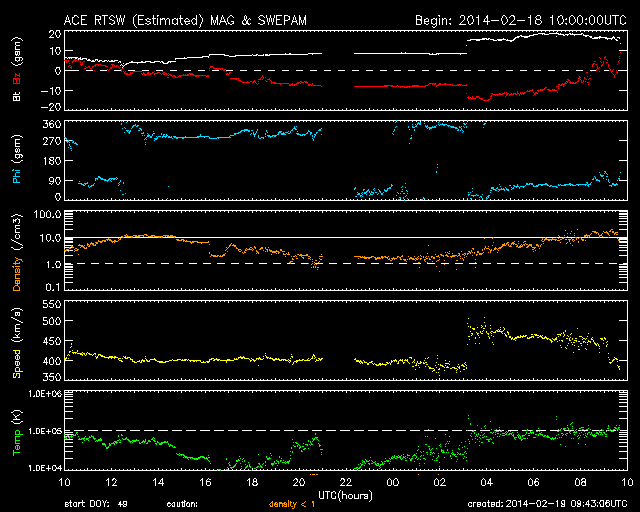 |
| ACE data. |
Back to Auroras | Home
